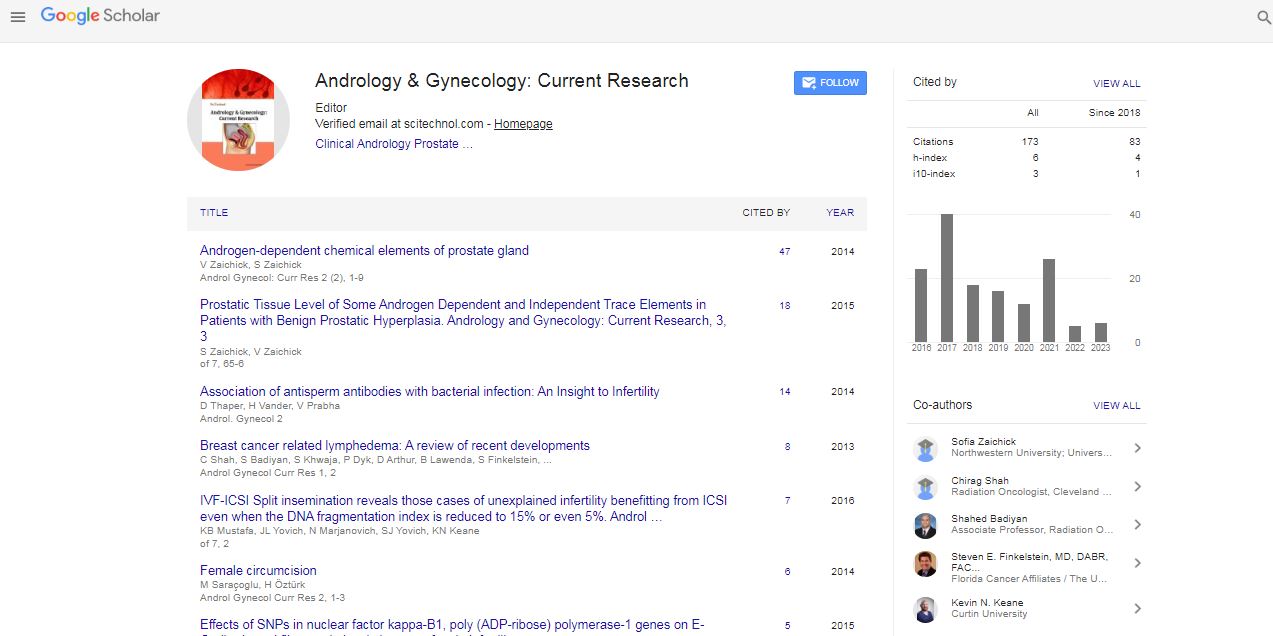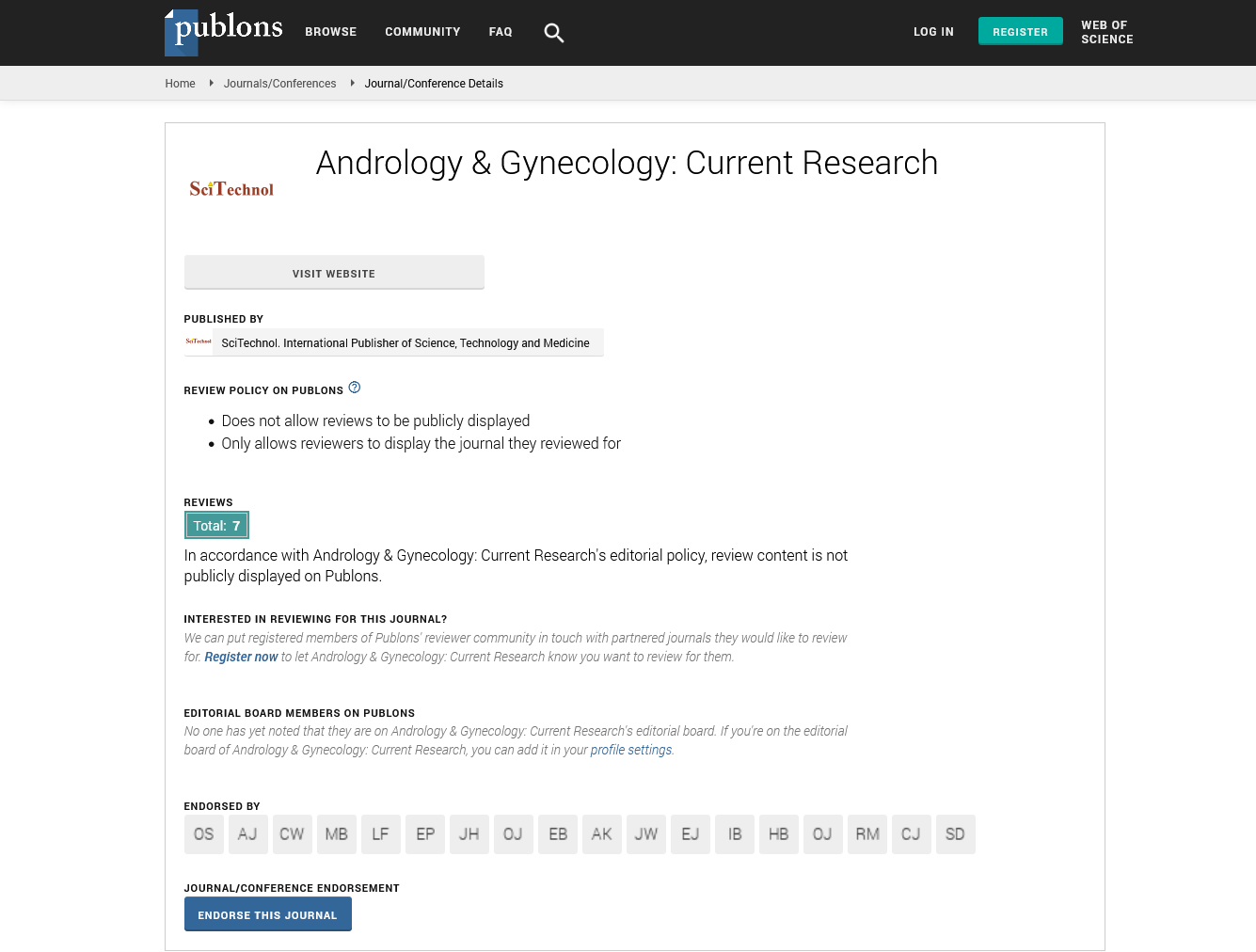Research Article, Androl Gynecol Curr Res Vol: 4 Issue: 1
Sexual Function after Childbirth according to the Mode of Delivery
| Yaser F Mohammed1, Hassan M Hassan1*, Amal M Al Dinary2 and Naglaa S Rashed1 | |
| 1Departments of Dermatology & Veneriology, Al-Azhar University, Egypt | |
| 2Community Medicine Faculty of Medicine, Al-Azhar University, Egypt | |
| Corresponding author : Hassan M. Hassan Departments of Dermatology & Veneriology, Al-Azhar University, Egypt Tel: +97082824010 E-mail: hasnasar56@hotmail.com |
|
| Received: December 22, 2015 Accepted: January 05, 2016 Published: January 11, 2016 | |
| Citation: Mohammed YF, Hassan HM, Dinary AMA, Rashed NS (2016) Sexual Function after Childbirth according to the Mode of Delivery. Androl Gynecol: Curr Res 4:1. doi:10.4172/2327-4360.1000142 |
Abstract
Sexual Function after Childbirth according to the Mode of Delivery
Background Female sexual dysfunction (FSD) is the inability to achieve or enjoy orgasm. It can influence physical, mental, and social aspects of individuals’ live. More attention is given to the sexual health nowadays. Aim of the study To investigate sexual behavior in the postpartum period according to the mode of delivery Subjects and methods Three hundred married females were enrolled in this study. A cross sectional study design was used. Each woman was asked to answer the female sexual function index (FSFI) with 2 answers one for before pregnancy and one for after delivery. Five modes of delivery were defined. Results Desire decreased in vaginal delivery without episiotomy significantly (3.3 ± 0.42) and improved in vaginal delivery with episiotomy and elective cesarean section (CS) significantly (3.6 ± 0.4, 3.6 ± 0.4 respectively). Arousal decreased in vaginal delivery without episiotomy and elective CS significantly, while it increased in vaginal delivery with episiotomy and instrumental delivery significantly (3.8 ± 0.4, 3.5 ± 0.3 respectively). Lubrication decreased in vaginal delivery without episiotomy (4.1 ± 0.4) and in emergent and elective CS significantly (4 ± 0.5, 4.2 ± 0.3 respectively). Orgasm decreased in vaginal delivery without episiotomy and in emergent CS significantly (3.9 ± 0.6, 4.2 ± 0.3 respectively), while improved in case of vaginal delivery without episiotomy significantly (3.9 ± 0.6). Satisfaction decreased significantly in vaginal delivery without episiotomy (3.9 ± 0.6), while improved significantly in vaginal delivery with episiotomy (3.7 ± 0.6). Pain was worse in all groups significantly. Total score decreased significantly in the group delivered vaginally without episiotomy and with elective CS (23 ± 1.5, 23 ± 1 respectively), while improved in vaginal delivery with episiotomy and with instrumental delivery (23 ± 4.1, 22 ± 1). Conclusion We can conclude that female sexual dysfunction is an important health problem. The FSFI total score was <26 in all modes of deliveries. Most of the FSFI domain scores were significantly different across all modes of deliveries. Further, change in total score of FSFI among all groups after delivery was significant except in emergent CS..
 Spanish
Spanish  Chinese
Chinese  Russian
Russian  German
German  French
French  Japanese
Japanese  Portuguese
Portuguese  Hindi
Hindi 


